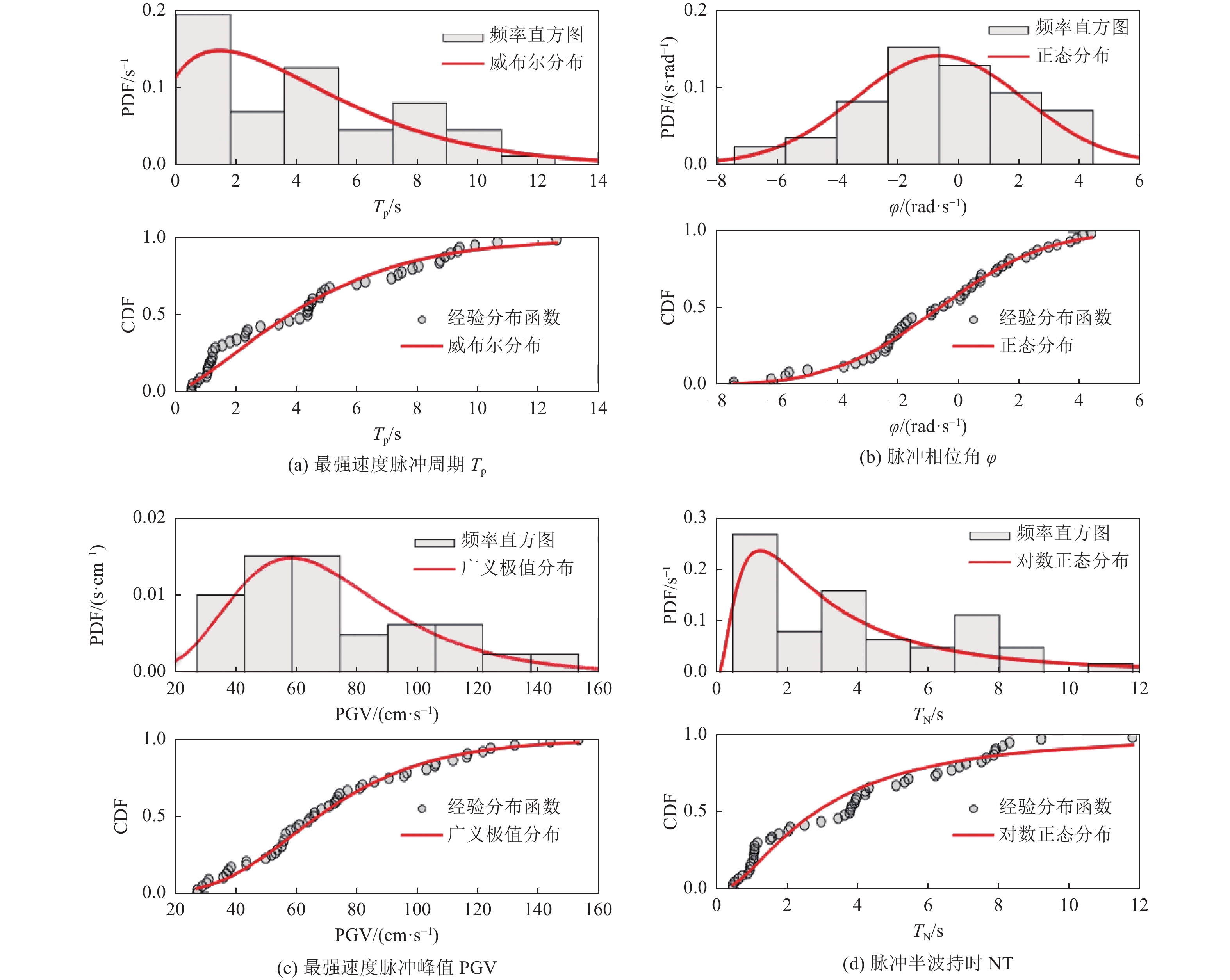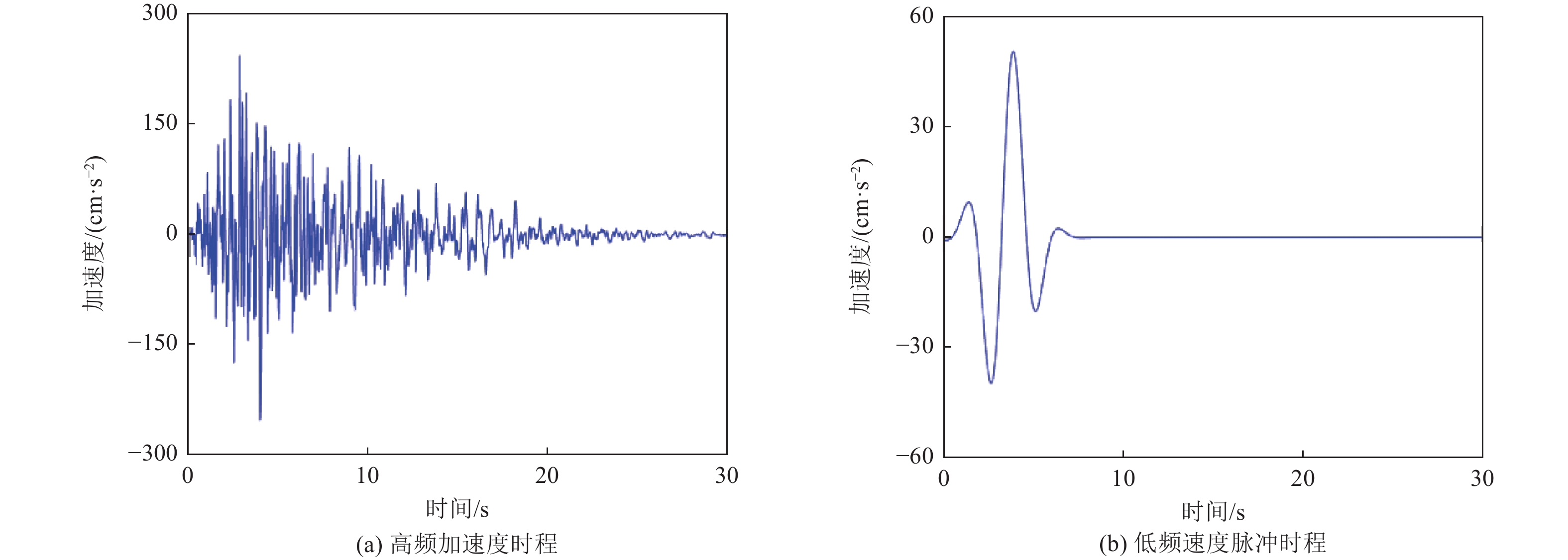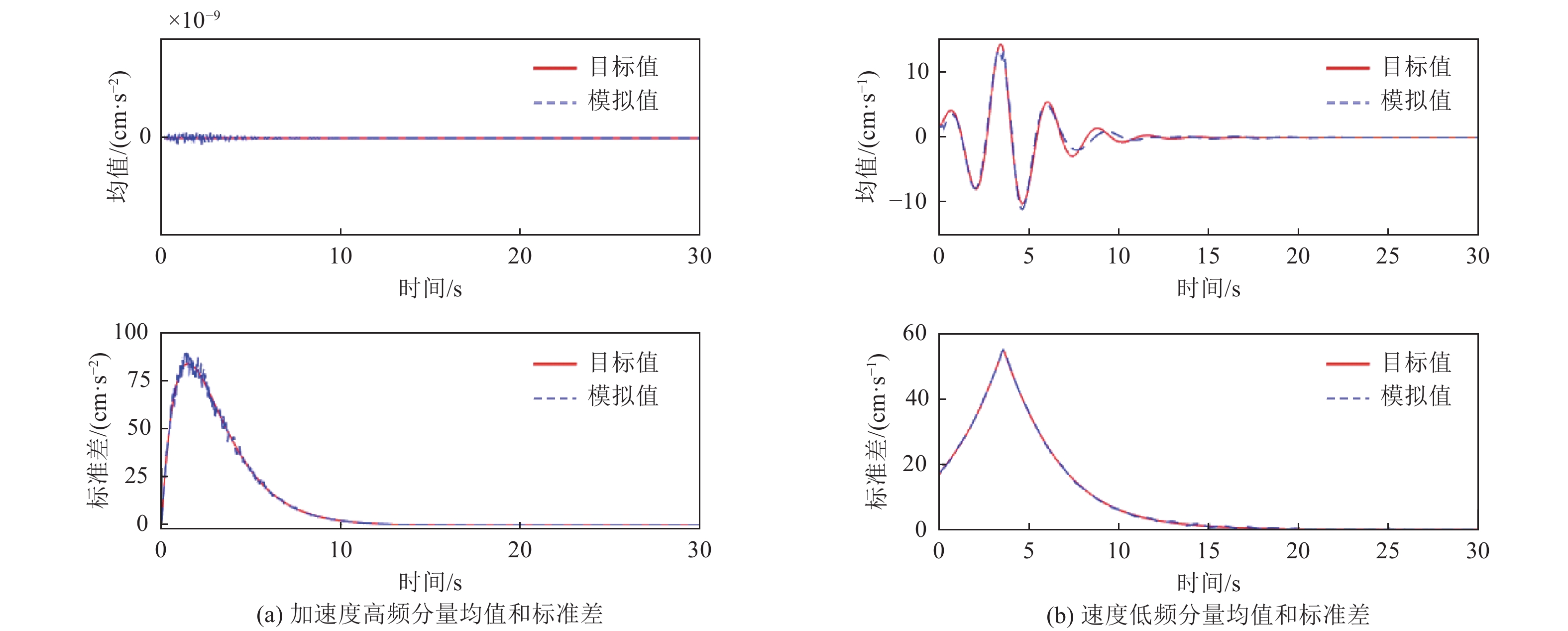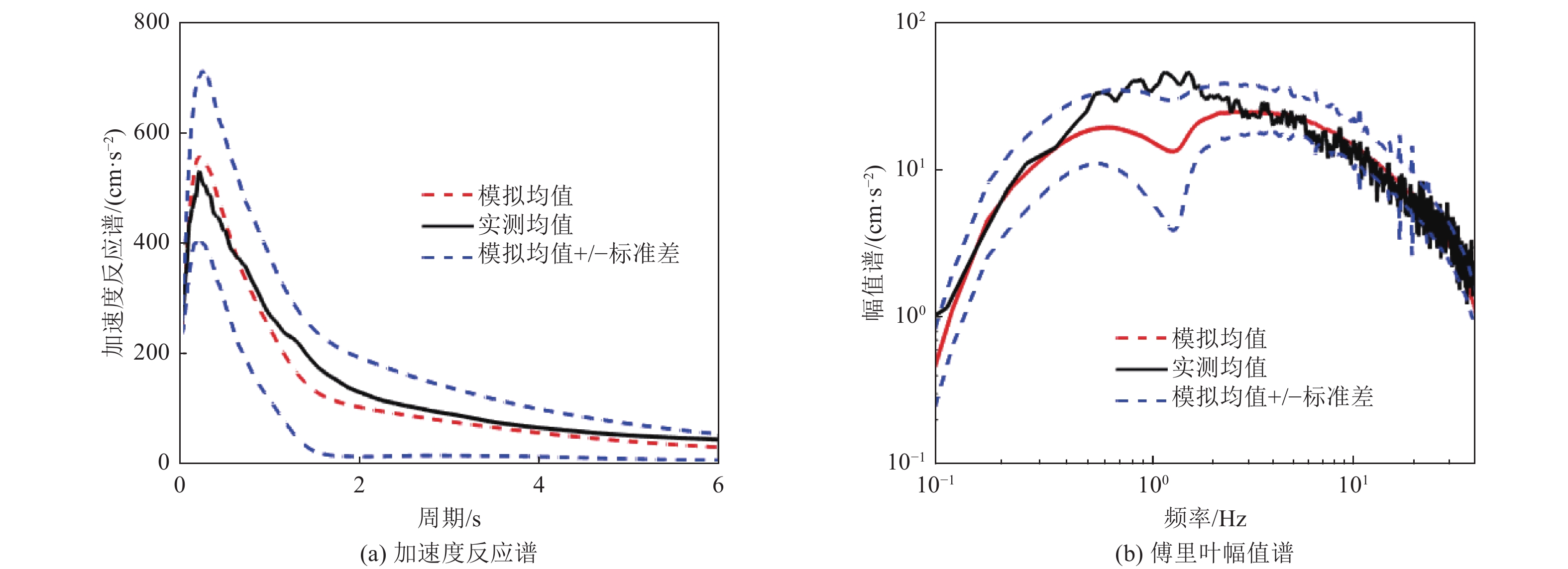Dimension Reduction Modeling of Near-fault Ground Motion Considering Randomness of Pulse Parameters
-
摘要: 根据50组近断层脉冲型强震动记录,采用连续小波变换提取最强速度脉冲分量,建立最强速度脉冲峰值时刻的统计模型。对近断层地震动加速度高频分量的演变功率谱模型参数进行识别,并利用谱表示-随机函数方法实现了降维模拟,进而积分得到速度高频分量。对脉冲参数进行随机化处理,并采用改进Gabor小波模型随机模拟速度低频分量。将速度高频分量与低频分量叠加得到近断层地震动速度时程。数值算例表明,近断层地震动加速度代表性时程集合的幅值谱和反应谱均与实测记录拟合一致,验证了降维模拟方法的工程适用性。近断层脉冲型地震动的降维模拟与概率密度演化理论相结合,可实现工程结构的随机地震反应与抗震可靠性精细化分析。Abstract: Based on 50 groups of near-fault pulse-like ground motion records, the strongest velocity pulse component was extracted by continuous wavelet transform, and the statistical model of the peak time of strongest velocity pulse was established. At the same time, the parameters of the evolution power spectrum model of the high frequency component of near-fault ground motion acceleration are identified, and its dimension reduction simulation is realized by spectral representation-random function method, and then the high frequency component of velocity is obtained by integrating. Secondly, the pulse parameters are randomized and the improved Gabor wavelet model is used to simulate the low-frequency component of velocity. Finally, the process of near-fault ground motion velocity is obtained by superposing them. Numerical examples show that the amplitude spectrum and response spectrum of the representative time history set of near-fault ground motion acceleration are consistent with the measured records, which verifies the engineering applicability of the proposed method. The combination of dimension reduction simulation of near-fault pulse-like ground motion and probability density evolution theory can realize the subtle analysis of random seismic response and seismic reliability of engineering structures.
-
表 1 近断层脉冲型地震动记录信息
Table 1. Information of the measured records of near-fault pulse-like ground motions
RSN
编号矩震级
MW断层距
R/km脉冲周期
Tp/s脉冲峰值
PGV/(cm·s−1)脉冲峰值
时刻tpk/sRSN
编号矩震级
MW断层距
R/km脉冲周期
Tp/s脉冲峰值
PGV/(cm·s−1)脉冲峰值
时刻tpk/s150 5.7 3.10 1.23 49.60 2.725 1161 7.5 10.90 5.99 53.00 6.100 159 6.5 0.70 2.34 53.50 7.650 1176 7.5 4.80 4.95 90.60 11.750 161 6.5 10.40 4.40 36.70 8.880 4040 6.6 1.70 2.02 124.20 17.860 170 6.5 7.30 4.42 70.80 7.390 4065 6.0 2.90 1.22 35.80 4.915 171 6.5 0.10 3.42 116.40 4.980 4098 6.0 3.00 1.33 51.60 3.220 173 6.5 8.60 4.52 55.20 7.445 4100 6.0 3.00 1.08 57.90 3.185 178 6.5 12.90 4.50 55.80 8.210 4101 6.0 5.50 0.52 31.00 2.720 179 6.5 7.00 4.79 80.80 6.730 4102 6.0 3.60 1.02 43.50 3.115 180 6.5 4.00 4.13 96.50 7.195 4103 6.0 4.20 0.70 38.30 2.970 181 6.5 1.40 3.77 121.60 7.300 4107 6.0 2.50 1.19 81.90 3.445 182 6.5 0.60 4.38 111.90 5.880 4113 6.0 2.90 1.13 27.00 2.930 184 6.5 5.10 6.27 73.50 7.455 4115 6.0 2.60 1.19 56.50 3.120 185 6.5 7.50 4.82 73.40 7.075 4126 6.0 3.80 0.57 43.40 2.305 316 5.9 16.70 4.39 60.80 10.090 6887 7.0 18.10 12.60 59.90 31.130 451 6.2 0.50 1.07 76.80 3.585 6897 7.0 8.50 7.83 65.90 25.460 459 6.2 9.90 1.23 37.30 5.835 6911 7.0 7.30 9.92 106.10 24.840 568 5.8 6.30 0.81 68.30 1.405 6927 7.0 7.10 7.37 116.50 25.270 723 6.5 0.90 2.39 143.90 12.200 6928 7.0 25.70 10.60 30.20 21.590 838 7.3 34.90 9.13 28.80 14.960 6942 7.0 26.80 8.04 56.50 28.090 879 7.3 2.20 5.12 132.30 12.100 6960 7.0 13.60 9.39 63.80 26.220 900 7.3 23.60 7.50 55.80 18.440 6962 7.0 1.50 7.14 85.70 25.390 1106 6.9 1.00 1.09 105.60 7.820 6966 7.0 22.30 8.76 65.70 26.520 1114 6.9 3.30 2.83 103.00 9.850 6969 7.0 20.90 9.35 64.40 27.770 1119 6.9 0.30 1.81 95.60 5.390 6975 7.0 6.10 8.93 74.10 27.480 1120 6.9 1.50 1.55 153.20 6.170 8161 7.2 11.30 8.72 72.60 39.510 表 2 近断层地震动高频分量模型参数取值
Table 2. Simulation parameters of high-frequency component in near-fault ground motion
参数 取值 参数 取值 频率离散点数N 1 600 地震动峰值加速度${ \overline{A}}_{\mathrm{max}} $ 240 cm·s−2 截止频率上限$ \omega_{{\rm{u}}} $ 50π rad·s−1 峰值因子$ r $ 2.6 截止频率下限$ \omega_{1} $ 2π rad·s−1 场地土卓越圆频率$ \omega_{{\rm{g}}} $ 15.7 rad·s−1 频率离散步长$ \Delta \omega $ 0.094 rad·s−1 场地土阻尼比$ \zeta_{{\rm{g}}} $ 0.887 高、低频分界限$ f_{{\rm{r}}} $ 2π rad·s−1 基岩卓越圆频率$ \omega_{{\rm{f}}} $ 1.57 rad·s−1 地震动持时$ T $ 30 s 基岩阻尼比$ \zeta_{{\rm{f}}} $ 0.887 时间步长$ \Delta t $ 0.02 s 样本数量$ n_{{\rm{sel}}} $ 1 069 表 3 近断层地震动低频脉冲成分模型参数取值
Table 3. Simulation parameters of low-frequency component in near-fault ground motion
模型参数 概率分布 概率分布系数 TN 对数正态分布 M1=1.028 1,S1=0.903 4 $ \varphi $ 正态分布 M2=−0.66,S2=2.80 PGV 广义极值分布 k=0.008 7,Sigma=24.64,Mu=58.47 $T_{\rm{p}} $ 威布尔分布 Sc=4.998 4,Sa=1.405 5 注:M1、S1分别为对数正态分布的均值和标准差;M2、S2分别为正态分布的均值和标准差;Sigma、Mu、k分别为广义极值分布的尺度参数、位置参数和形状参数;Sc和Sa分别为威布尔分布的尺度参数和形状参数。 -
陈笑宇, 王东升, 付建宇 等, 2021. 近断层地震动脉冲特性研究综述. 工程力学, 38(8): 1—14, 54Chen X. Y. , Wang D. S. , Fu J. Y. , et al. , 2021. State-of-the-art review on pulse characteristics of near-fault ground motions. Engineering Mechanics, 38(8): 1—14, 54. (in Chinese) 范增磊, 2017. 非平稳地震动演变功率谱的估计与建模研究. 秦皇岛: 燕山大学.Fan Z. L. , 2017. Study on evolution of non-stationary seismic ground motion estimation and modeling of power spectrum. Qinhuangdao: Yanshan University. (in Chinese) 贾路, 阮鑫鑫, 刘章军, 2019. 近断层脉冲型地震动的降维模拟. 地震研究, 42(4): 516—522Jia L. , Ruan X. X. , Liu Z. J. , 2019. Dimension reduction simulation for near-field fault pulse-like ground motion. Journal of Seismological Research, 42(4): 516—522. (in Chinese) 姜云木, 阮鑫鑫, 刘章军, 2021. 主余震型地震动过程的降维模拟. 振动与冲击, 40(24): 282—292Jiang Y. M. , Ruan X. X. , Liu Z. J. , 2021. Dimension-reduction simulation of main aftershock type ground motion process. Journal of Vibration and Shock, 40(24): 282—292. (in Chinese) 李华聪, 钟菊芳, 2021. 最强脉冲方向分量的周期特性及其影响因素分析. 地震研究, 44(1): 96—104Li H. C. , Zhong J. F. , 2021. Analysis on the period characteristics of the strongest pulse direction component and its influence factors. Journal of Seismological Research, 44(1): 96—104. (in Chinese) 李启成, 杜玉春, 严冬冬 等, 2013. 基于改进的经验格林函数方法的地震动模拟. 地震研究, 36(1): 74—80Li Q. C. , Du Y. C. , Yan D. D. , et al. , 2013. Ground motion simulation based on improved empirical Green’s function method. Journal of Seismological Research, 36(1): 74—80. (in Chinese) 刘启方, 袁一凡, 金星 等, 2006. 近断层地震动的基本特征. 地震工程与工程振动, 26(1): 1—10Liu Q. F. , Yuan Y. F. , Jin X. , et al. , 2006. Basic characteristics of near-fault ground motion. Earthquake Engineering and Engineering Vibration, 26(1): 1—10. (in Chinese) 刘章军, 刘增辉, 刘威, 2017. 全非平稳地震动过程的概率模型及反应谱拟合. 振动与冲击, 36(2): 32—38Liu Z. J. , Liu Z. H. , Liu W. , 2017. Probability model of fully non-stationary ground motion with the target response spectrum compatible. Journal of Vibration and Shock, 36(2): 32—38. (in Chinese) 罗全波, 陈学良, 高孟潭 等, 2018. 近断层速度脉冲与震源机制的关系浅析. 震灾防御技术, 13(3): 646—661Luo Q. B. , Chen X. L. , Gao M. T. , et al. , 2018. Relationship between near-fault velocity pulse and focal mechanism. Technology for Earthquake Disaster Prevention, 13(3): 646—661. (in Chinese) 田玉基, 杨庆山, 卢明奇, 2007. 近断层脉冲型地震动的模拟方法. 地震学报, 29(1): 77—84Tian Y. J. , Yang Q. S. , Lu M. Q. , 2007. Simulation method of near-fault pulse-type ground motion. Acta Seismologica Sinica, 29(1): 77—84. (in Chinese) 王宇航, 2015. 近断层区域划分及近断层速度脉冲型地震动模拟. 成都: 西南交通大学.Wang Y. H., 2015. The near-fault region zoning and near-fault velocity pulse-like ground motion simulation. Chengdu: Southwest Jiaotong University. (in Chinese) 魏勇, 崔建文, 王秋良 等, 2018. 基于合成地震动的2014年鲁甸MS6.5地震场地效应分析. 地震研究, 41(1): 32—37Wei Y. , Cui J. W. , Wang Q. L. , et al. , 2018. Analysis on site effect of 2014 Yunnan Ludian MS6.5 earthquake based on simulating ground motion. Journal of Seismological Research, 41(1): 32—37. (in Chinese) 杨福剑, 王国新, 2019. 一种改进的近断层脉冲型地震动模拟方法. 震灾防御技术, 14(3): 489—500 doi: 10.11899/zzfy20190303Yang F. J. , Wang G. X. , 2019. An improved approach for near-fault pulse-like ground motion simulation. Technology for Earthquake Disaster Prevention, 14(3): 489—500. (in Chinese) doi: 10.11899/zzfy20190303 杨庆山, 田玉基, 2014. 地震地面运动及其人工合成. 北京: 科学出版社.Yang Q. S., Tian Y. J., 2014. Earthquake ground motions & artificial generation. Beijing: Science Press. (in Chinese) 赵晓芬, 温增平, 陈波, 2018. 近断层地震动最强速度脉冲方向分量特性研究. 地震学报, 40(5): 673—688 doi: 10.11939/jass.20170178Zhao X. F. , Wen Z. P. , Chen B. , 2018. Characteristics of near-fault velocity pulses in the strongest pulse orientation. Acta Seismologica Sinica, 40(5): 673—688. (in Chinese) doi: 10.11939/jass.20170178 赵晓芬, 温增平, 谢俊举等, 2021.2018年台湾花莲MW6.4地震近断层地震动方向性差异. 振动与冲击, 40(10): 235—243Zhao X. F. , Wen Z. P. , Xie J. J. , et al. , 2021. Ground motion directionality in the 2018 Taiwan Hualien MW 6.4 earthquake. Journal of Vibration and Shock, 40(10): 235—243. (in Chinese) Bray J. D. , Rodriguez-Marek A. , 2004. Characterization of forward-directivity ground motions in the near-fault region. Soil Dynamics and Earthquake Engineering, 24(11): 815—828. doi: 10.1016/j.soildyn.2004.05.001 Clough R. W. , Penzien J. , 2003. Dynamics of structures. 2 nd ed. Berkeley: Computers and Structures, Inc. , 65—66. Deodatis G. , Shinozuka M. , 1989. Simulation of seismic ground motion using stochastic waves. Journal of Engineering Mechanics, 115(12): 2723—2737. doi: 10.1061/(ASCE)0733-9399(1989)115:12(2723) Dickinson B. W. , Gavin H. P. , 2011. Parametric statistical generalization of uniform-hazard earthquake ground motions. Journal of Structural Engineering, 137(3): 410—422. doi: 10.1061/(ASCE)ST.1943-541X.0000330 Howard J. K. , Tracy C. A. , Burns R. G. , 2005. Comparing observed and predicted directivity in near-source ground motion. Earthquake Spectra, 21(4): 1063—1092. doi: 10.1193/1.2044827 Kalkan E. , Kunnath S. K. , 2006. Effects of fling step and forward directivity on seismic response of buildings. Earthquake Spectra, 22(2): 367—390. doi: 10.1193/1.2192560 Li J. , Chen J. B. , 2006. The probability density evolution method for dynamic response analysis of non-linear stochastic structures. International Journal for Numerical Methods in Engineering, 65(6): 882—903. doi: 10.1002/nme.1479 Li J. , Chen J. B. , 2007. The number theoretical method in response analysis of nonlinear stochastic structures. Computational Mechanics, 39(6): 693—708. doi: 10.1007/s00466-006-0054-9 Liang J. W. , Chaudhuri S. R. , Shinozuka M. , 2007. Simulation of nonstationary stochastic processes by spectral representation. Journal of Engineering Mechanics, 133(6): 616—627. doi: 10.1061/(ASCE)0733-9399(2007)133:6(616) Liu Z. J. , Liu W. , Peng Y. B. , 2016. Random function based spectral representation of stationary and non-stationary stochastic processes. Probabilistic Engineering Mechanics, 45: 115—126. doi: 10.1016/j.probengmech.2016.04.004 Liu Z. J. , Liu Z. X. , Chen D. H. , 2018. Probability density evolution of a nonlinear concrete gravity dam subjected to nonstationary seismic ground motion. Journal of Engineering Mechanics, 144(1): 04017157. doi: 10.1061/(ASCE)EM.1943-7889.0001388 Mavroeidis G. P. , Papageorgiou A. S. , 2003. A mathematical representation of near-fault ground motions. Bulletin of the Seismological Society of America, 93(3): 1099—1131. doi: 10.1785/0120020100 Shahi S. K. , Baker J. W. , 2014. An efficient algorithm to identify strong‐velocity pulses in multicomponent ground motions. Bulletin of the Seismological Society of America, 104(5): 2456—2466. doi: 10.1785/0120130191 Vanmarcke E. H. , Lai S. S. P. , 1980. Strong-motion duration and RMS amplitude of earthquake records. Bulletin of the Seismological Society of America, 70(4): 1293—1307. Yang D. X. , Zhou J. L. , 2015. A stochastic model and synthesis for near-fault impulsive ground motions. Earthquake Engineering & Structural Dynamics, 44(2): 243—264. -



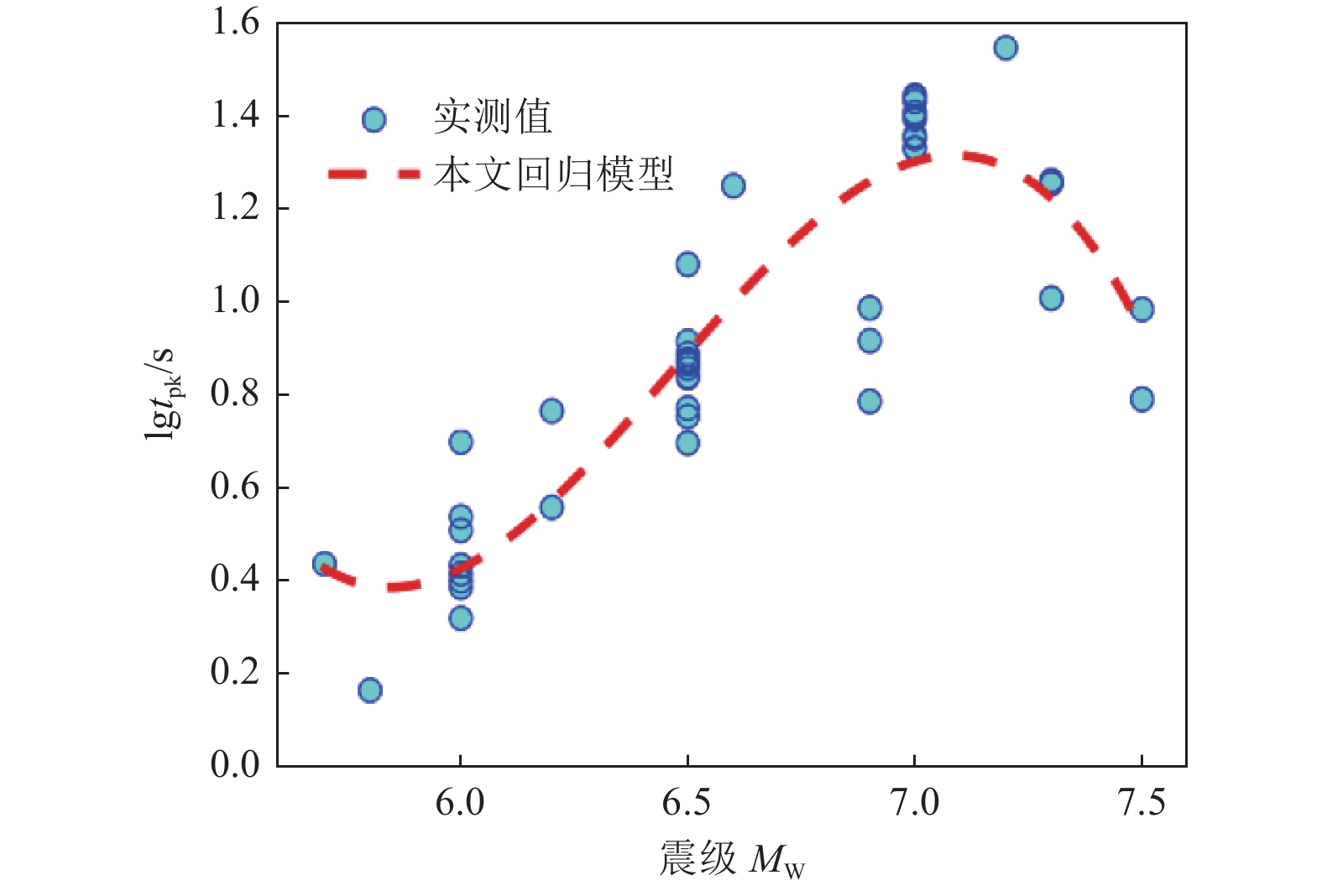




 下载:
下载:

